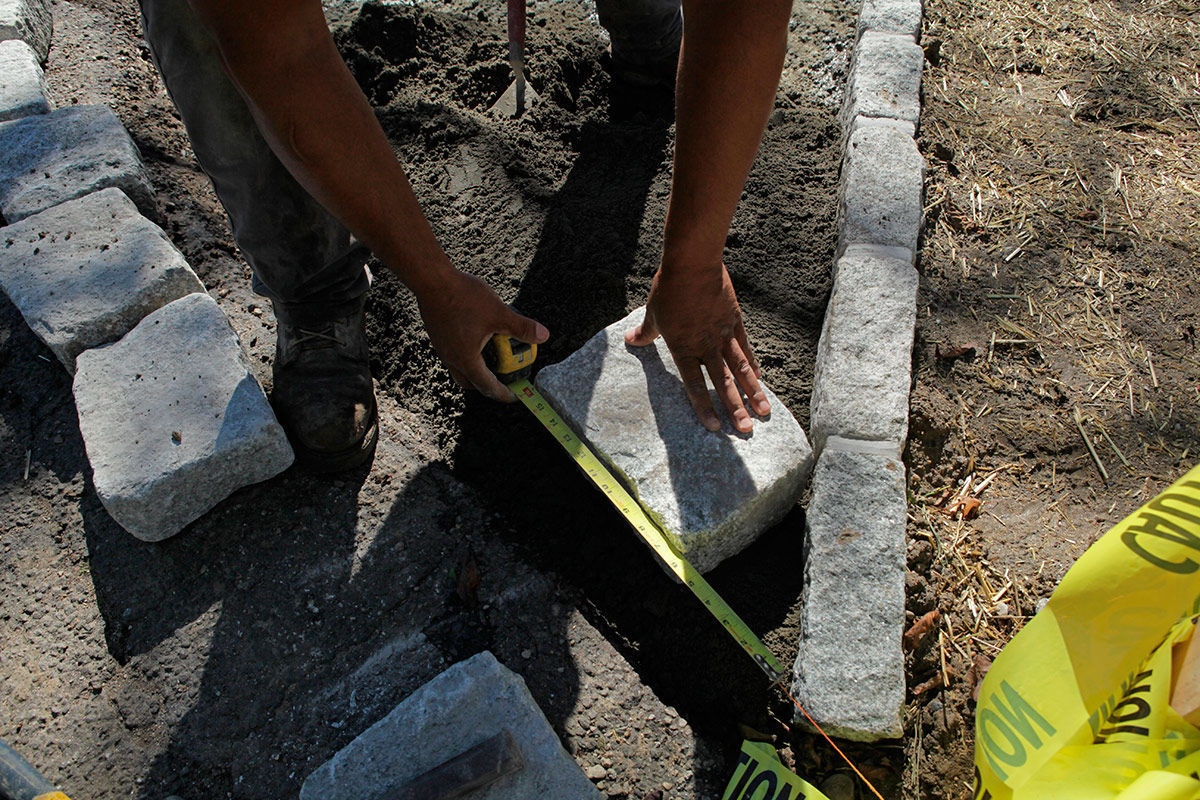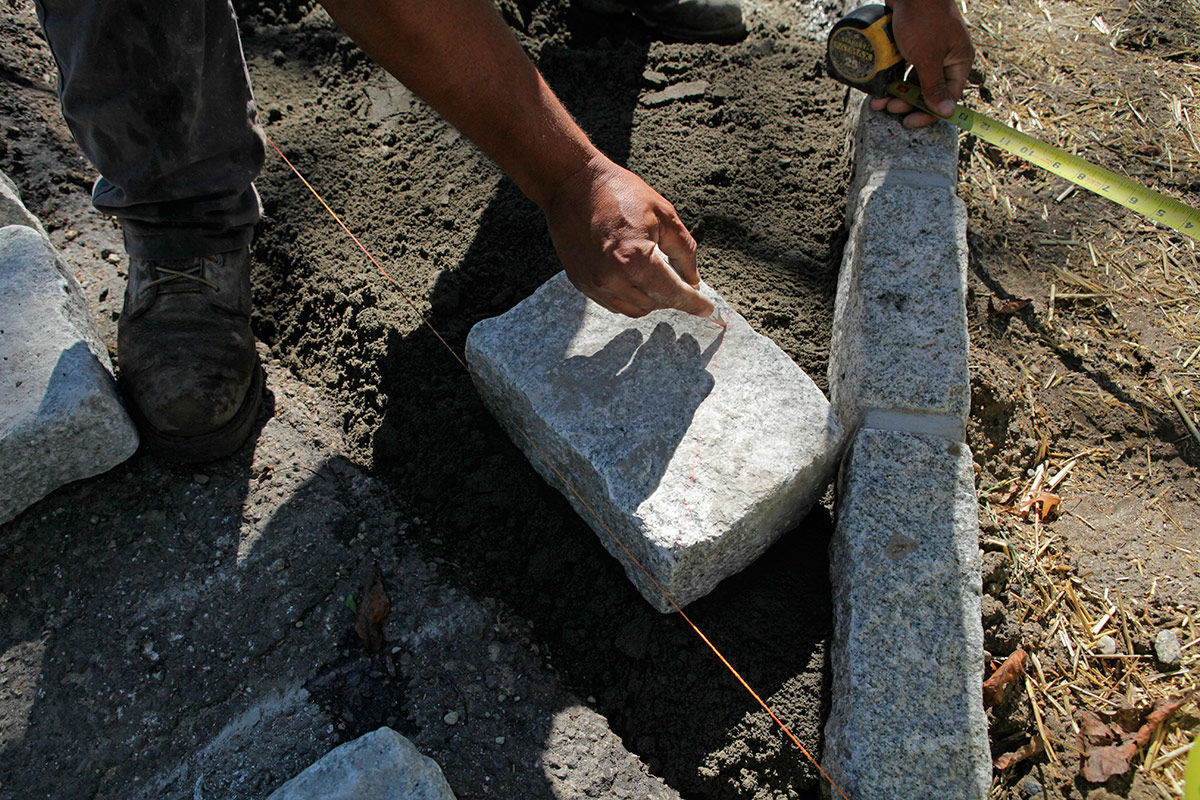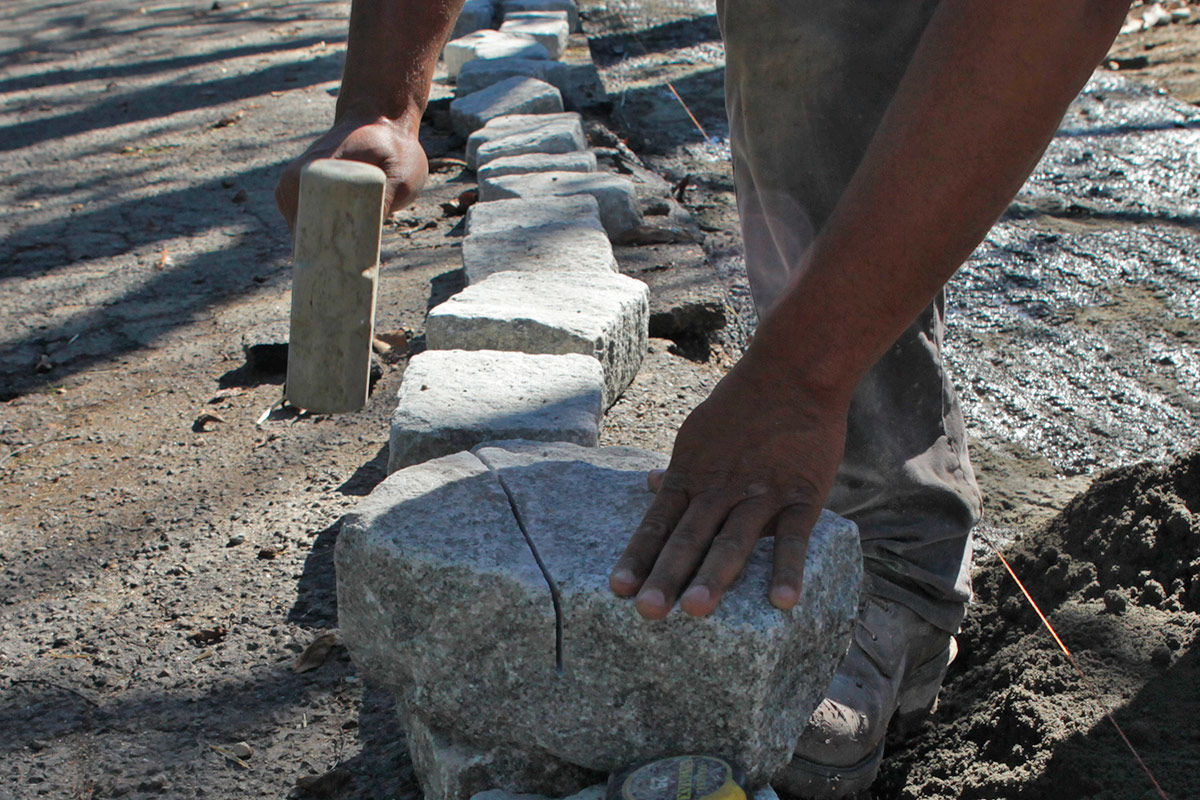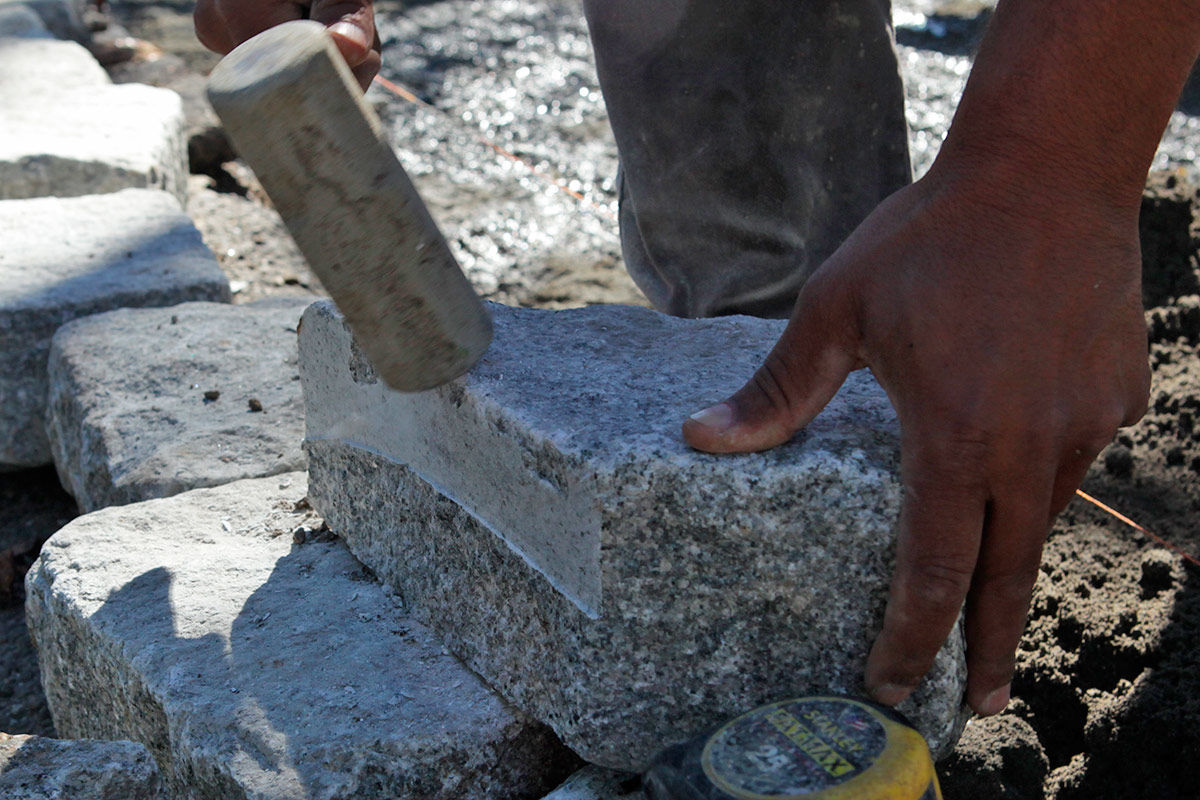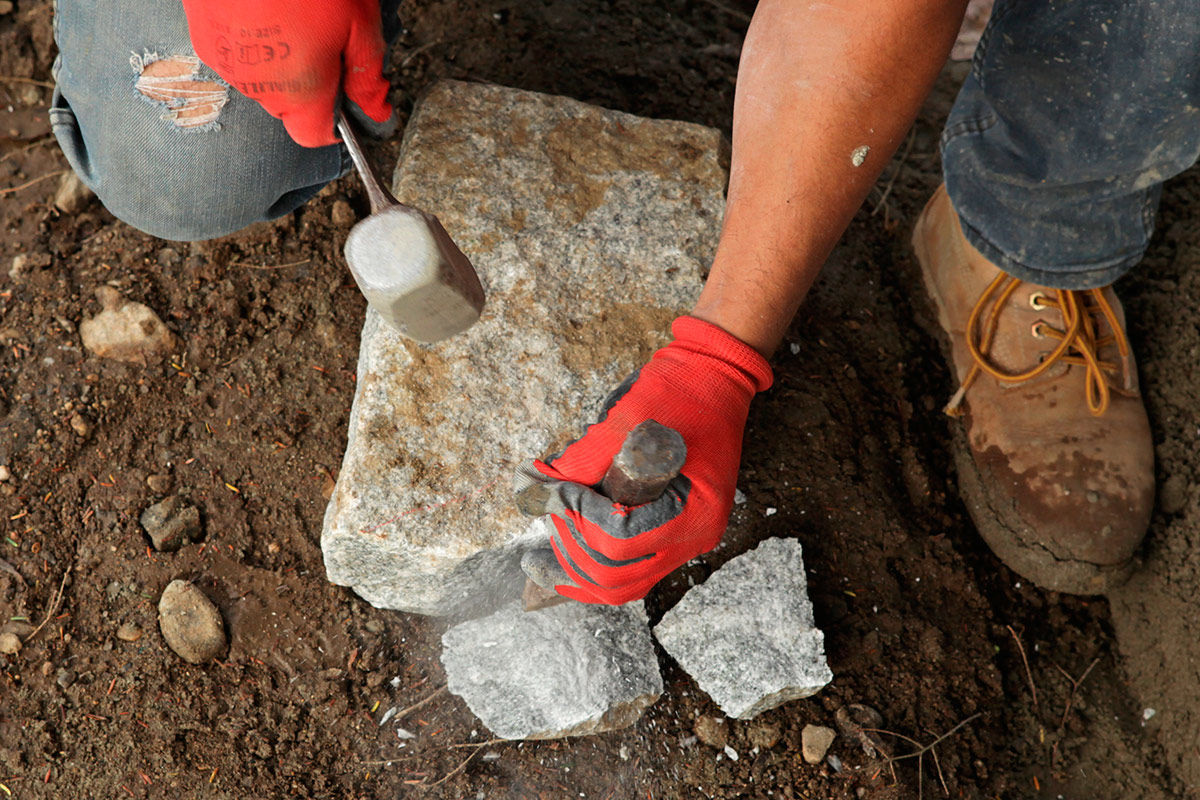How to Cut Belgian Block
Learn two reliable techniques–and what tools you will need for each–for cutting and shaping granite pavers.

Part of the charm of Belgian blocks is that they’re uneven. No two blocks are the same, and they have a tumbled, weathered look. When you have to cut a block to fit—a normal occurrence at the ends of Belgian-block driveway aprons—you don’t want to leave the cut looking clean. It would just look weird next to all those other rough edges.
When the ends of the apron are square, you usually only need to cut blocks to fit every other course since the vertical joints are offset roughly half a block length. But the end of this driveway flares out, so the first and last block in each course need to be cut at a diagonal.
A gas-powered masonry saw makes the work of shaping the blocks go faster, but a hammer is required to finish the job. You can also make the whole cut with just a hammer and hand tracer—a type of chisel—but this method is best reserved for smaller cuts since the cutoff is all waste.
Saw and hammer method:
Measure in place. Temporarily place the block and measure for the cut. Since this apron will taper from front to back, the mason measures the distance from the edge farthest from the curb. This method only works at the start of a course; at the far end, the blocks won’t fit in the remaining space. See the first image in the “hammer and chisel” method to see how to mark at the far end.
Transfer the measurement. Take the measurement and transfer it to the opposite side of the block, then draw a line connecting that mark to the corner that was measured from.
Score it. Use a gas-powered masonry saw to cut about one-half to three-quarters of the way through the block.
Break it. Use a stone hammer or engineer’s hammer to break the block on the cutline.
Rough it up. Use the hammer to roughen up the cut edge for a more natural look.
Place it. Put the block into position and test the fit.
Hammer and chisel method:
Score it. Measure front and back. Take measurements at both the front and back of the course, and transfer those measurements to the block. Take the width of the joint between the end of the block and any curbing into account.
Rough cut. Use a hammer and a hand tracer—a type of masonry chisel—to cut back toward the line a little at a time. Take off about 1/2-in to 3/4-in. with each pass. Let the weight of the hammer do most of the work.
Fine tune. With about 1/2 in. to 3/4 in. to go, put the tracer right on the line and break away the last of the waste. Use the same method to clean up any remaining spurs.
Send it home. If the fit is good, set the block.
Read the entire article: Add a Belgian Block Driveway Apron

